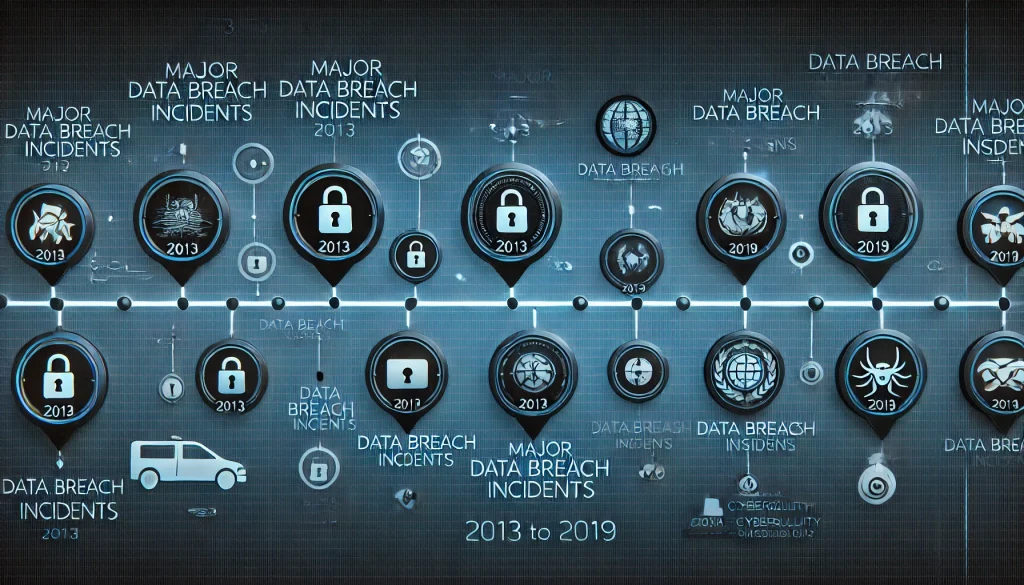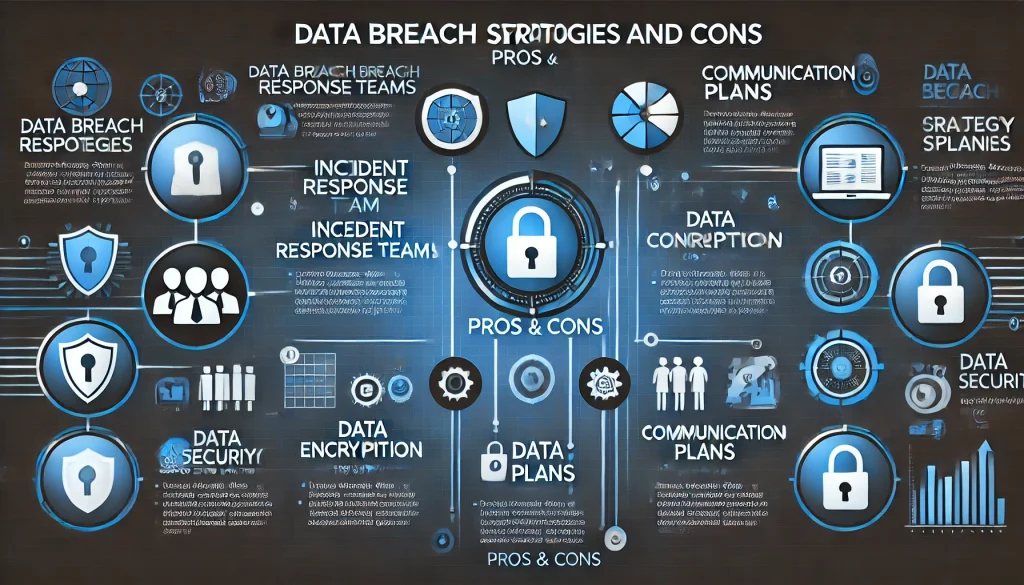
A data breach is one of the most critical threats to businesses and individuals in the digital age. In recent years, breaches have exposed sensitive information such as personal details, credit card numbers, and even government records. These incidents often result in massive financial losses, legal consequences, and a significant erosion of trust between companies and their customers. Understanding the scope and impact of data breaches is crucial for anyone involved in cybersecurity, risk management, or data protection.
This review explores some of the most significant data breach incidents in recent years, highlighting how they occurred, their aftermath, and key lessons learned. The insights gained from these events can help organizations build stronger defenses and react swiftly when breaches do happen. By understanding these major incidents, businesses can implement more robust cybersecurity measures to mitigate risks in the future.
Overview of Data Breaches
A data breach occurs when unauthorized individuals access sensitive information stored by companies or organizations. These breaches typically happen due to hacing, phishing schemes, or vulnerabilities in a company’s security system. The exposed data can include personal records, financial information, and proprietary business details, leading to severe consequences for both organizations and affected individuals.
In today’s interconnected world, the number of data breaches is increasing, and no organization is completely safe from these cyber threats. Some breaches expose the records of millions of users, causing significant damage. While cybersecurity systems are more advanced than ever, attackers also continue to evolve, finding new ways to exploit weaknesses in both small and large companies. Forbes highlights that data breaches can not only lead to financial loss but also irreparable damage to a company’s reputation, leading to customer churn and loss of market trust. Effective response strategies and timely detection are critical for reducing the overall impact.
Major Data Breach Incidents

The following is a review of some of the most notable data breach incidents in recent years, each of which has reshaped how organizations approach cybersecurity.
Equifax Data Breach (2017)
In 2017, Equifax, one of the largest credit reporting agencies, suffered a data breach that exposed the personal data of 147 million Americans. The breach was caused by a vulnerability in Equifax’s web application. The stolen information included names, Social Security numbers, birth dates, and even driver’s license numbers. Equifax faced major legal battles and was fined over $700 million. This breach highlighted the need for regular software updates and stronger encryption methods to protect sensitive data.
Yahoo Data Breach (2013-2014)
The Yahoo data breach is still one of the largest in history, compromising over 3 billion accounts. Hackers accessed usernames, email addresses, and security questions. Yahoo initially reported the breach late and provided insufficient details to users, which damaged its reputation and reduced its sale price to Verizon. This breach demonstrated the importance of transparent communication with customers and having robust incident response plans in place.
Marriott International Breach (2018)
In 2018, Marriott International disclosed that hackers had stolen sensitive information, including passport numbers and personal details of 500 million guests. The attack, which started years before being discovered, came from vulnerabilities in the Starwood Hotels system, acquired by Marriott in 2016. This breach showed how integrating acquired systems can create vulnerabilities if not thoroughly secured and monitored.
Target Data Breach (2013)
The Target data breach occurred in 2013 when hackers gained access to the payment information of 40 million customers through a third-party vendor. The breach exploited weaknesses in Target’s payment systems, resulting in millions of dollars in losses and legal fees. This case emphasized the importance of vendor risk management and monitoring third-party access to sensitive systems.
Capital One Data Breach (2019)
In 2019, Capital One revealed that the personal data of 100 million customers had been exposed due to a vulnerability in its cloud infrastructure. A former employee of a cloud services provider exploited this vulnerability, highlighting the risks associated with cloud security and third-party access. The breach led to significant financial penalties and prompted businesses to strengthen their cloud security protocols.
Here’s a summary of each incident’s impact:
| Incident | Scale | Data Sensitivity | Financial Damage |
|---|---|---|---|
| Equifax (2017) | 147 million people | Personal/Financial Data | $700 million in fines |
| Yahoo (2013-2014) | 3 billion accounts | Personal Details | $350 million sale price drop |
| Marriott (2018) | 500 million guests | Passport/Personal Data | £99 million GDPR fine |
| Target (2013) | 40 million cards | Credit Card Details | $18.5 million settlement |
| Capital One (2019) | 100 million apps | Personal/Financial Data | $80 million settlement |
In-Depth Impact of Data Breaches
Data breaches have far-reaching consequences that affect multiple aspects of an organization. Below are some key impacts of major data breaches:
Financial Impact
Data breaches can result in hefty fines, legal costs, and compensation for affected customers. For example, Equifax faced $700 million in fines due to its 2017 breach. Marriott was fined £99 million under the GDPR. These incidents highlight that the financial burden extends far beyond immediate remediation, affecting a company’s bottom line for years.
Reputational Damage
The public nature of data breaches can severely damage a company’s reputation, leading to lost customers and diminished brand loyalty. After Yahoo’s breach, the company suffered a reduction in its sale price by $350 million, proving that security failures can devalue businesses significantly.
Operational Disruption
Data breaches often force companies to halt operations while the attack is investigated. Marriott’s breach resulted in significant disruptions in its reservation system, impacting revenue streams and customer experience. Companies may need to allocate resources to investigate the breach, repair vulnerabilities, and reassure customers, all of which slow down regular business operations.
Legal and Regulatory Consequences
Breaches often led to legal actions and regulatory scrutiny. The introduction of regulations like the GDPR and CCPA means that companies now face stricter rules on data protection. Capital One, for example, was fined $80 million for failing to secure customer information, underscoring the need for compliance with data protection laws.
Pros and Cons of Data Breach Response Strategies

When it comes to handling a data breach, companies must weigh their response strategies carefully. Below is a table summarizing the pros and cons of common approaches:
| Response Strategy | Advantages | Disadvantages |
|---|---|---|
| Immediate Notification | Builds trust and transparency | Can cause panic and early reputational damage |
| Hiring Cybersecurity Experts | Brings expertise to resolve the breach | Expensive and time-consuming to implement |
| Encrypting Data | Protects sensitive information even if breached | Ineffective if encryption keys are also exposed |
| Improved Network Monitoring | Helps detect breaches early | Requires continuous investment in monitoring tools |
Lessons Learned from Major Data Breaches
These major incidents provide valuable lessons for organizations aiming to prevent or respond to data breaches effectively:
- Prioritize Encryption:
Encryption of sensitive data is a critical step in protecting valuable information. Even if a breach occurs, encryption ensures that stolen data is unreadable to unauthorized users. - Regular Software Updates:
Vulnerabilities in outdated software are one of the most common entry points for hackers. The Equifax breach could have been avoided if they had patched their system on time. Regular updates are essential for minimizing security risks. - Vendor Risk Management:
As seen in the Target breach, weak points in third-party systems can expose an organization to risks. Companies must establish strong protocols for managing vendor access and ensure that third-party systems meet strict security standards. - Cloud Security:
Capital One’s breach showed the importance of securing cloud-based systems and monitoring access to sensitive data stored in the cloud. Implementing strong access controls and encryption for cloud storage is crucial.
Conclusion
Data breaches continue to be one of the most serious threats in today’s digital landscape. High-profile incidents like those at Equifax, Yahoo, and Marriott demonstrate the need for robust cybersecurity strategies to prevent attacks and minimize their impact. Companies must invest in data encryption, regular software updates, and strong vendor risk management protocols to avoid vulnerabilities that could lead to a breach. While no organization is immune, swift detection, effective response strategies, and transparent communication with affected customers can mitigate the damage. The consequences of failing to secure data go beyond financial penalties—they can erode customer trust and disrupt business operations for years. Learning from past breaches allows organizations to stay proactive and better protect their data.
FAQ
What is the most significant data breach in history?
The Yahoo data breach from 2013 to 2014, which affected 3 billion accounts, is considered the largest data breach in history.
How can businesses protect themselves from data breaches?
Businesses can protect themselves by using data encryption, performing regular software updates, and improving vendor risk management.
What are the common consequences of a data breach?
Data breaches can lead to financial losses, legal penalties, reputational damage, and operational disruptions.
Resources
- Forbes. What is a Data Breach?
- TechRadar. Top Data Breaches and Cyber Attacks in 2024
- CSO Online. The Biggest Data Breaches of the 21st Century
- UpGuard. Biggest Data Breaches
- ICO. 72 Hours: How to Respond to a Personal Data Breach
